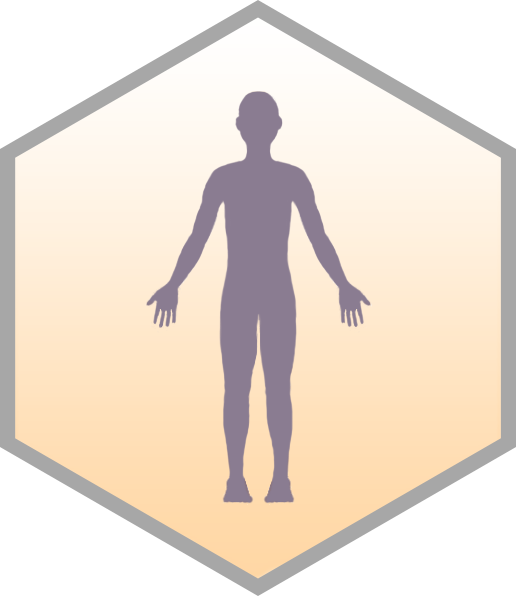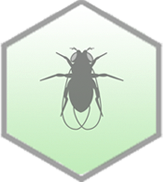GCN5 / YGR252W Overview
- Standard Name
- GCN5 1
- Systematic Name
- YGR252W
- SGD ID
- SGD:S000003484
- Aliases
- ADA4 14 , SWI9 13 , AAS104 11 , KAT2 12
- Feature Type
- ORF , Verified
- Description
- Catalytic subunit of ADA and SAGA histone acetyltransferase complexes; modifies N-terminal lysines on histones H2B and H3; acetylates Rsc4p, a subunit of the RSC chromatin-remodeling complex, altering replication stress tolerance; relocalizes to the cytosol in response to hypoxia; mutant displays reduced transcription elongation in the G-less-based run-on (GLRO) assay; greater involvement in repression of RNAPII-dependent transcription than in activation 2 3 5 6 7 8 9 10
- Name Description
- General Control Nonderepressible 4
- Comparative Info
-







Sequence
The S. cerevisiae Reference Genome sequence is derived from laboratory strain S288C. Download DNA or protein sequence, view genomic context and coordinates. Click "Sequence Details" to view all sequence information for this locus, including that for other strains.
Analyze Sequence
S288C only
BLASTN | BLASTP | Design Primers | Restriction Fragment Map | Restriction Fragment Sizes | Six-Frame Translation
S288C vs. other species
BLASTN vs. fungi | BLASTP at NCBI | BLASTP vs. fungi
S288C vs. other strains
Protein
Basic sequence-derived (length, molecular weight, isoelectric point) and experimentally-determined (median abundance, median absolute deviation) protein information. Click "Protein Details" for further information about the protein such as half-life, abundance, domains, domains shared with other proteins, protein sequence retrieval for various strains, physico-chemical properties, protein modification sites, and external identifiers for the protein.
- Summary
- Relocalizes to the cytosol in response to hypoxia
- Length (a.a.)
- 439
- Mol. Weight (Da)
- 51065.8
- Isoelectric Point
- 6.62
- Median Abundance (molecules/cell)
- 2135 +/- 870
- Half-life (hr)
- 7.6
Alleles
Curated mutant alleles for the specified gene, listed alphabetically. Click on the allele name to open the allele page. Click "SGD search" to view all alleles in search results.
View all GCN5 alleles in SGD search
Gene Ontology
GO Annotations consist of four mandatory components: a gene product, a term from one of the three Gene Ontology (GO) controlled vocabularies (Molecular Function, Biological Process, and Cellular Component), a reference, and an evidence code. SGD has manually curated and high-throughput GO Annotations, both derived from the literature, as well as computational, or predicted, annotations. Click "Gene Ontology Details" to view all GO information and evidence for this locus as well as biological processes it shares with other genes.
- Summary
- Subunit of SAGA, ADA, and SLIK histone acetyltransferase complexes involved ih chromatin modification and transcription regulation
View computational annotations
Molecular Function
- Manually Curated
- enables histone acetyltransferase activity (IDA)
- enables histone crotonyltransferase activity (IDA)
- enables histone H3 acetyltransferase activity (IGI, IMP, IDA)
- enables histone H3K56ac reader activity (IDA)
- enables histone H4K12ac reader activity (IDA)
- enables histone H4K16ac reader activity (IDA)
- enables transcription coregulator activity (IDA)
Biological Process
- Manually Curated
- involved in chromatin organization (IDA)
- involved in chromatin remodeling (IMP)
- involved in positive regulation of transcription elongation by RNA polymerase II (IMP, IGI)
Cellular Component
- Manually Curated
- part of ADA complex (IDA)
- located in chromosome, centromeric region (IDA)
- located in cytosol (IDA)
- located in nucleus (IDA)
- part of SAGA complex (IDA)
- part of SLIK (SAGA-like) complex (IDA)
Complex
Macromolecular complex annotations are imported from the Complex Portal. These annotations have been derived from physical molecular interaction evidence extracted from the literature and cross-referenced in the entry, or by curator inference from information on homologs in closely related species or by inference from scientific background.
Phenotype
Phenotype annotations for a gene are curated single mutant phenotypes that require an observable (e.g., "cell shape"), a qualifier (e.g., "abnormal"), a mutant type (e.g., null), strain background, and a reference. In addition, annotations are classified as classical genetics or high-throughput (e.g., large scale survey, systematic mutation set). Whenever possible, allele information and additional details are provided. Click "Phenotype Details" to view all phenotype annotations and evidence for this locus as well as phenotypes it shares with other genes.
- Summary
- Non-essential gene in reference strain S288C; null mutants grow slowly, have increased lifespan, flocculate more readily, cannot utilize glutamine or maltose, have abnormal spindles and buds, decreased ethanol tolerance, are defective in endocytosis, are sensitive to heat, metals, nucleotide analogs, TOR inhibitor rapamycin and various antibiotics, and are auxotrophic for myo-inositol; overexpression slows vegetative growth, increases lifespan, enhances invasive growth
Classical Genetics
- null
- actin cytoskeleton morphology: abnormal
- adhesion: absent
- cell cycle progression through the G1/S phase transition: delayed
- chemical compound accumulation: decreased
- chemical compound accumulation: increased
- chronological lifespan: decreased
- chronological lifespan: increased
- fermentative growth: decreased
- flocculation: increased
- growth in exponential phase: decreased rate
- heat sensitivity: increased
- metal resistance: decreased
- metal resistance: increased
- mitochondrial distribution: abnormal
- mitochondrial genome maintenance: abnormal
- mitochondrial genome maintenance: decreased
- mitochondrial morphology: abnormal
- mitochondrial morphology: normal
- mitophagy: increased
- oxidative stress resistance: decreased
- protein/peptide accumulation: decreased
- protein/peptide accumulation: increased
- protein/peptide modification: absent
- protein/peptide modification: decreased
- pseudohyphal growth: decreased
- replicative lifespan: decreased
- replicative lifespan: increased
- resistance to chemicals: decreased
- respiratory growth: decreased
- respiratory growth: normal
- respiratory metabolism: decreased rate
- respiratory metabolism: normal
- RNA accumulation: decreased
- spindle morphology: abnormal
- utilization of carbon source: decreased
- utilization of carbon source: increased
- UV resistance: decreased
- vegetative growth: absent
- vegetative growth: decreased
- overexpression
- unspecified
- reduction of function
- null
- alkaline pH resistance: decreased
- auxotrophy
- bud morphology: abnormal
- chemical compound accumulation: abnormal
- chemical compound excretion: increased
- chronological lifespan: decreased
- competitive fitness: decreased
- endocytosis: decreased
- heat sensitivity: increased
- lipid particle morphology: abnormal
- metal resistance: decreased
- metal resistance: increased
- oxidative stress resistance: decreased
- resistance to chemicals: decreased
- resistance to chemicals: increased
- resistance to enzymatic treatment: decreased
- respiratory growth: decreased
- respiratory growth: decreased rate
- respiratory growth: increased
- sporulation efficiency: decreased
- sporulation: absent
- starvation resistance: decreased
- transposable element transposition: decreased
- utilization of nitrogen source: decreased rate
- vegetative growth: decreased rate
- overexpression
- repressible
- reduction of function
Large-scale Survey
Interaction
Interaction annotations are curated by BioGRID and include physical or genetic interactions observed between at least two genes. An interaction annotation is composed of the interaction type, name of the interactor, assay type (e.g., Two-Hybrid), annotation type (e.g., manual or high-throughput), and a reference, as well as other experimental details. Click "Interaction Details" to view all interaction annotations and evidence for this locus, including an interaction visualization.
1396 total interactions for 654 unique genes
Physical Interactions
- Affinity Capture-MS: 428
- Affinity Capture-RNA: 6
- Affinity Capture-Western: 94
- Biochemical Activity: 55
- Co-crystal Structure: 2
- Co-fractionation: 3
- Co-localization: 5
- Co-purification: 31
- Protein-peptide: 1
- Reconstituted Complex: 21
- Two-hybrid: 5
Genetic Interactions
- Dosage Growth Defect: 2
- Dosage Lethality: 6
- Dosage Rescue: 16
- Negative Genetic: 270
- Phenotypic Enhancement: 34
- Phenotypic Suppression: 26
- Positive Genetic: 62
- Synthetic Growth Defect: 168
- Synthetic Lethality: 115
- Synthetic Rescue: 46
Regulation
The number of putative Regulators (genes that regulate it) and Targets (genes it regulates) for the given locus, based on experimental evidence. This evidence includes data generated through high-throughput techniques. Click "Regulation Details" to view all regulation annotations, shared GO enrichment among regulation Targets, and a regulator/target diagram for the locus.
- Summary
- Gcn5p is the catalytic acetyltransferase subunit of three chromatin modifying histone acetyltransferase (HAT) complexes that regulate gene expression: ADA, SAGA and SLIK (SAGA-like)/SALSA. Gcn5p targets N-terminal lysine residues K11/K16 and K9/K14/K18/K23/K27 in histones H2B and H3 respectively. While recombinant Gcn5p acts on free histones, in association with HAT complexes, Gcn5p acetylates histones contained in nucleosomes which facilitates chromatin accessibility for binding of additional transcription factors and the transcriptional preinitiation complex. The ADA, SAGA and SLIK/SALSA complexes also regulate the retrograde response which involves signal transduction from the mitochondria to the nucleus. In response to hypoxia, nuclear Gcn5p relocalizes to the cytosol.
Expression
Expression data are derived from records contained in the Gene Expression Omnibus (GEO), and are first log2 transformed and normalized. Referenced datasets may contain one or more condition(s), and as a result there may be a greater number of conditions than datasets represented in a single clickable histogram bar. The histogram division at 0.0 separates the down-regulated (green) conditions and datasets from those that are up-regulated (red). Click "Expression Details" to view all expression annotations and details for this locus, including a visualization of genes that share a similar expression pattern.
Summary Paragraph
A summary of the locus, written by SGD Biocurators following a thorough review of the literature. Links to gene names and curated GO terms are included within the Summary Paragraphs.
Last Updated: 2006-04-25
Literature
All manually curated literature for the specified gene, organized into topics according to their relevance to the gene (Primary Literature, Additional Literature, or Review). Click "Literature Details" to view all literature information for this locus, including shared literature between genes.